“I can think of many reasonable excuses for needing a cocktail, but Cinco De Mayo is always a no-brainer.” – Rachil Hollis, American author and motivational speaker
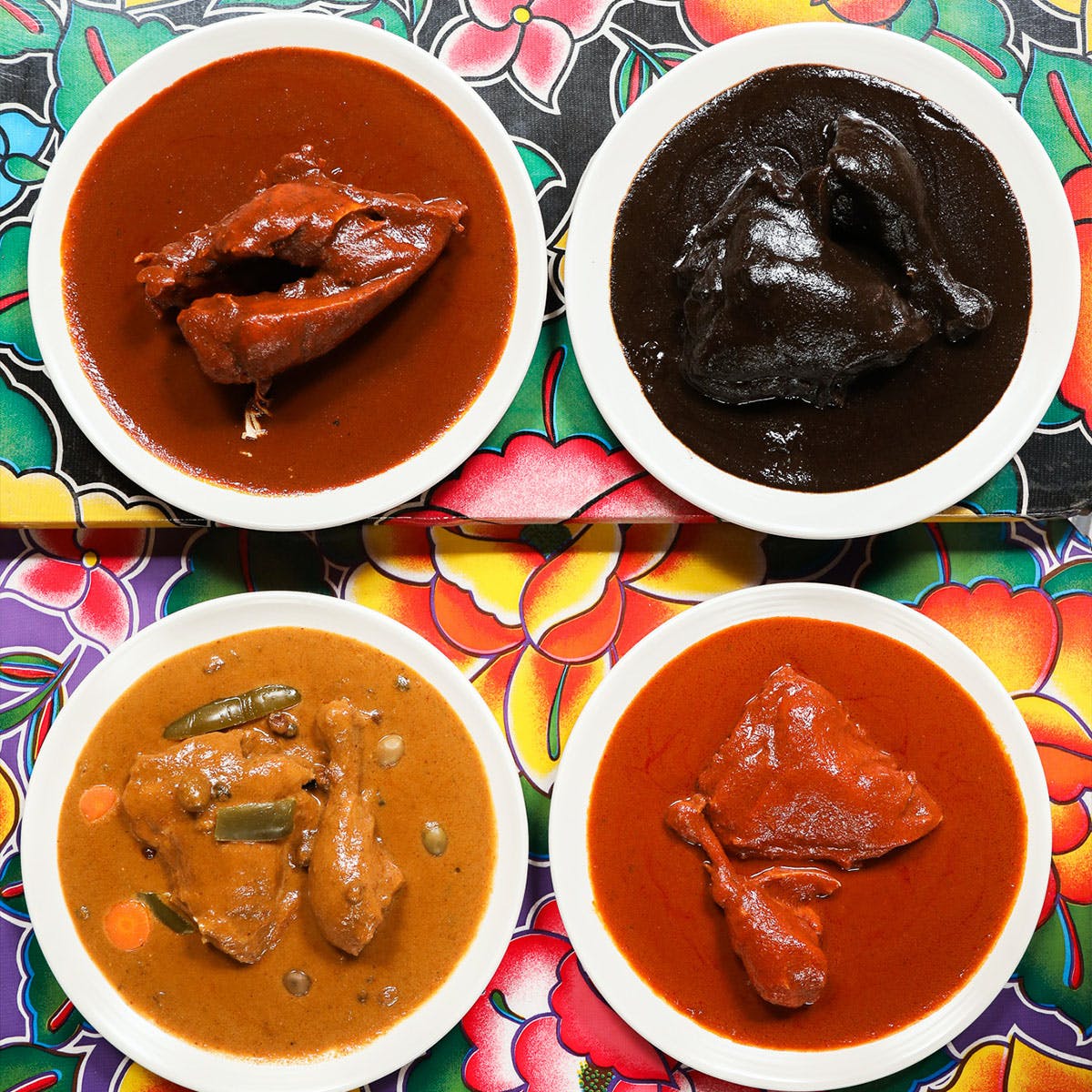

High on our bucket list, is Puebla de Zaragoza, the City of Angels, with its historic city center that’s been declared a World Cultural Heritage Site by UNESCO. It met all expectations and more with its exceptional colonial architecture, bell towers, domes, famous Talavera pottery, cultural legacy, and most especially its culinary history (Mmmore on that later).

Puebla is one of México’s largest (and fastest growing) cities (pop: 3,200,000) located in east-central Mexico, and is known for its rich history and beautiful architecture. It’s a two hour drive southeast from Mexico City through the Sierra Madre Mountains. Its altitude is the same at 7,000’ above sea level.
Now, if you’re a Cinco de Mayo party person, please raise your glass with a toast, cheers and a “Salud!” to Puebla. Celebrated annually in the city, May 5th is recognized as a symbol of Mexican national unity and pride.
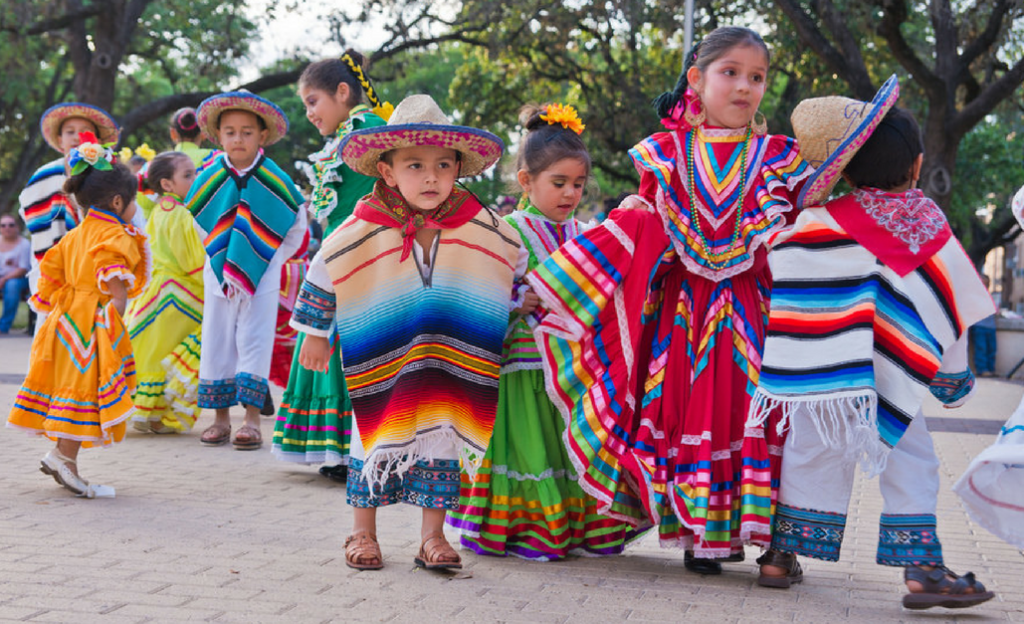
For it was on May 5, 1862, that the city honors the significant battle that took place during the Franco-Mexican War between the Mexican forces, led by General Ignacio Zaragoza, and the mighty French army, who were surprisingly defeated with heavy losses.
However, it’s important to note that while the victory at the Battle of Puebla was important, it didn’t ultimately prevent the French from occupying México. They returned, and after a few more years of conflict, Maximilian I, of Austria, was installed as Emperor. Sadly, his short 3-year reign ended with his execution in Queretaro on the 19th of June 1867, and the restoration of the Mexican Republic.
Puebla is also known for its many churches. We visited two; the first is the iconic landmark, Cathedral Basilica of Puebla, a World Heritage Site, and an impressive example of Spanish colonial architecture, completed in 1647, just 28 years after Spain first conquered México.
The Cathedral is rich in its works of art: paintings, sculpture, gold, silver and hand-carved wooden treasures, sacred vessels, chalices, gold-plated crosses inlaid with bright jewels and diamonds, and lavish ornamentations and decorations throughout its interior … phew! It’s a glorious sight to behold.




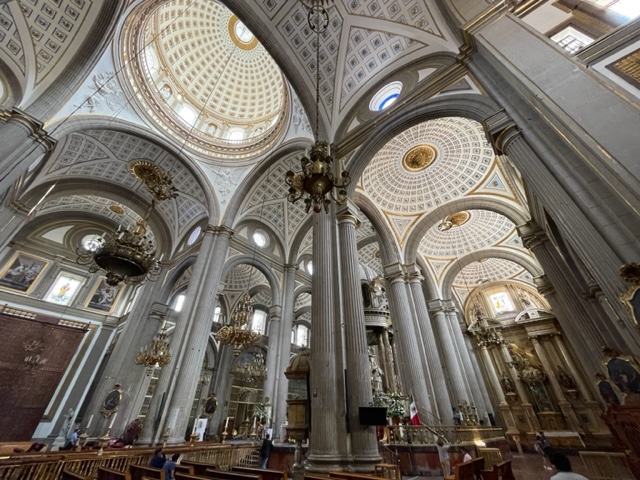
I’ve been to many a church in all my travels, but the Church of Santo Domingo (Iglesia de Santo Domingo) is my second most favorite church visited, with its ornate façade, a prime example of Baroque architecture.
Inside, it’s home to the Rosary Chapel, a masterpiece of the Mexican Baroque style with its intricate design work and sumptuous use of gold leaf ornamentation, fine stucco work, and its stunning domed ceiling.


The chapel’s design incorporates much religious symbolism, including representations of the rosary, saints, angels, and biblical scenes.



If you’re ever in Puebla and have time to see only one church, make it the Church of Santo Domingo, a must-see in all its magnificence. You will be “blinded by the light.”
The Zócalo de Puebla was celebrating the Day of the Dead holidays with Catrinas, Alebrijes and some of the most unusual, big-eyed alien creatures that reminded me of E.T.; all lined up along the pathways. Otherworldly, they were wildly decorated and imaginative visions created by local artists; each one more over-the-top than the next. Local families joyfully posed by these vivid sculptures.






The Quinta Real Puebla Hotel is located in the historic center, and a 5-minute walk to the Zócalo and Cathedral. It was originally built in the 1500s as a convent. We had a lengthy walk across the broad, open-air courtyard to reach our rooms. 500 years of history passed through the labyrinth of rooms, galleries, offices and gathering spaces. No ghosts were seen nor heard.
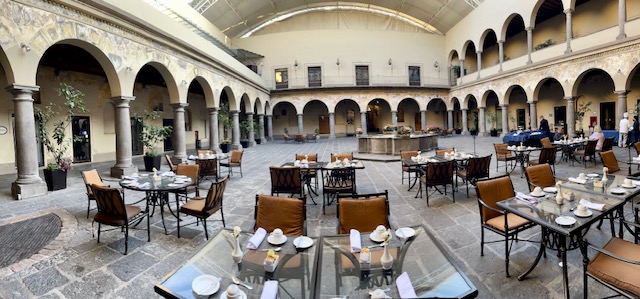
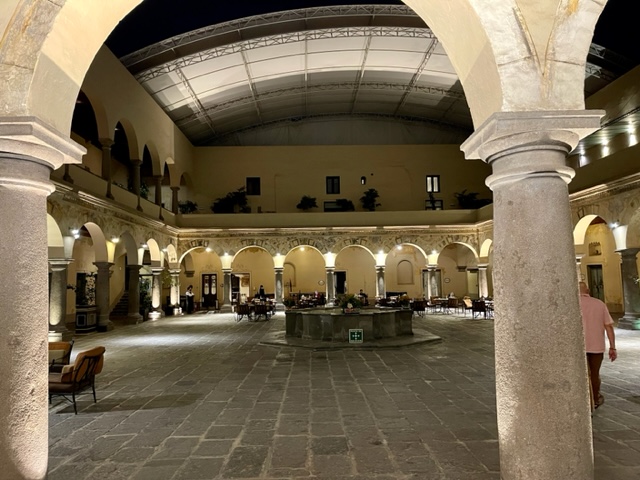
Most importantly, Puebla is known for its exquisite Talavera Pottery. The iconic Mexican ceramic ware is known for its unique, handcrafted designs, and dates back to the 16th-century, when Spanish artisans introduced this form of ceramics to México. In fact, I commented on how much Puebla reminded me of Portugal, famous for its blue and white Azulejos Tiles; found everywhere on building façades. Puebla ceramic tiles adorned buildings throughout its historic center, too.




Fortunately for us, Gate 1 chose the most famous Talavera workshop to visit, Uriarte Talavera, the oldest and most renowned producer. It was founded in 1824 by Dimas Uriarte, and has since maintained a legacy of creating high-quality, handcrafted Talavera pottery using traditional methods.

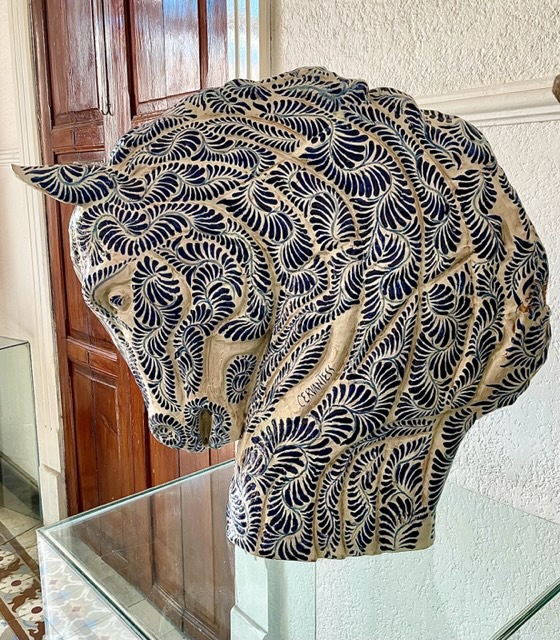

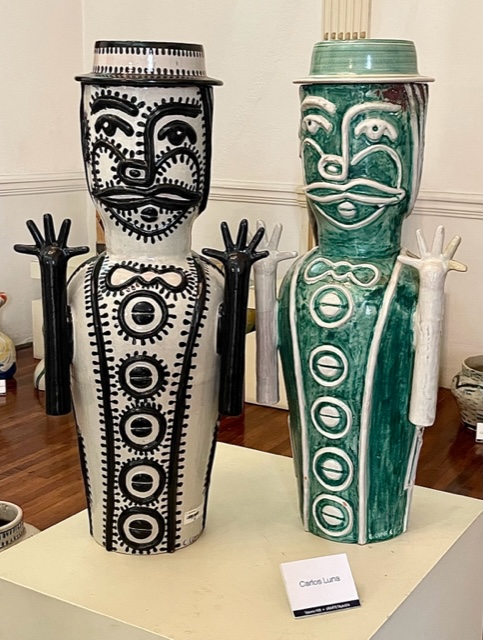
While awaiting the beginning of our tour, the inner courtyard featured a magnificent Día de los Muertos altar of the dead. What made it a standout was the trashed pieces of colorful ceramics piled high and surrounding its tiered ofrenda. Now worthless, the ceramic pieces would now honor the deceased.
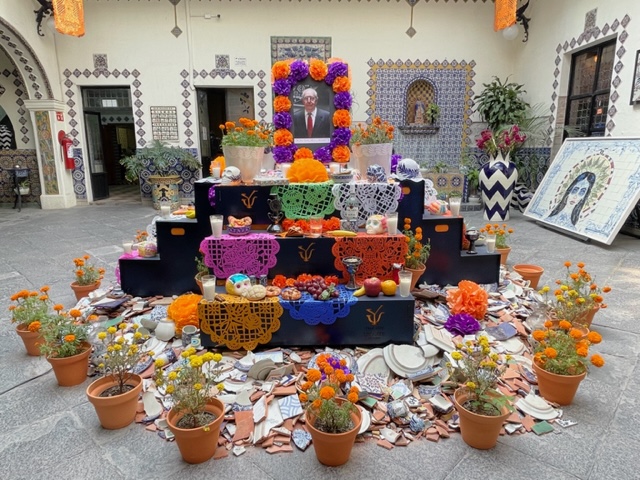
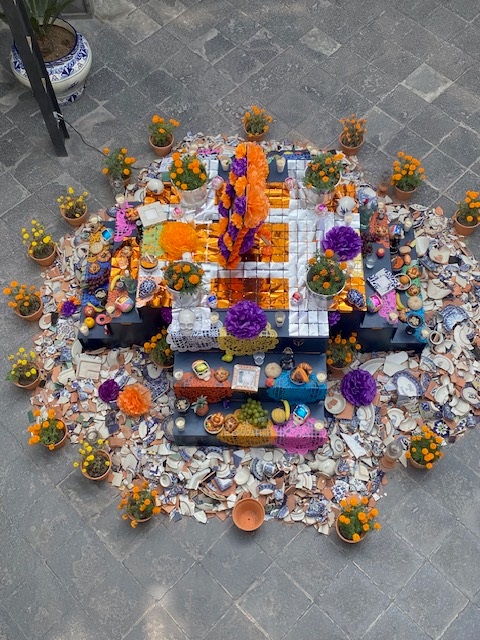
Our tour guide led us throughout the lengthy process of producing their hand-painted pieces that showcase the finest workmanship. The craftsmanship involved in creating these pieces utilizes a precise, and laborious process, from the preparation of the clay to the painting and glazing, all which we were fortunate to watch.
Every step of the process is 100% handmade, reflected in the final cost of the product. The Uriarte craftworkers took exceptional pride in their work. One woman stood out to me – the one and only person that’s responsible for signing each and every ceramic piece.





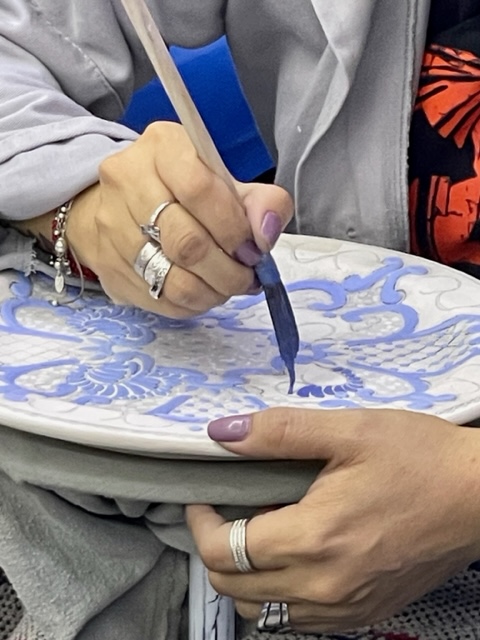
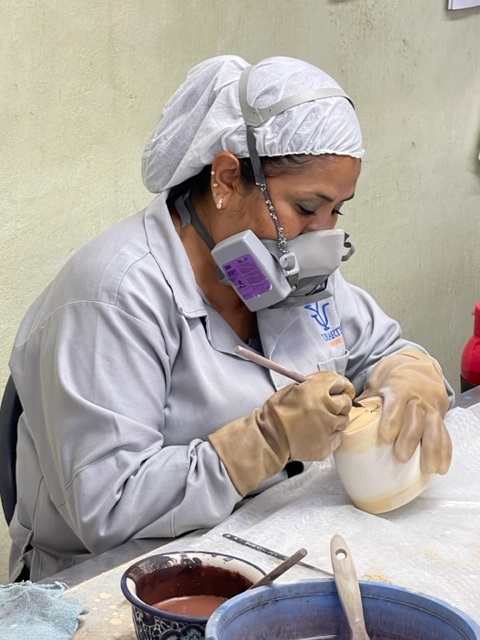
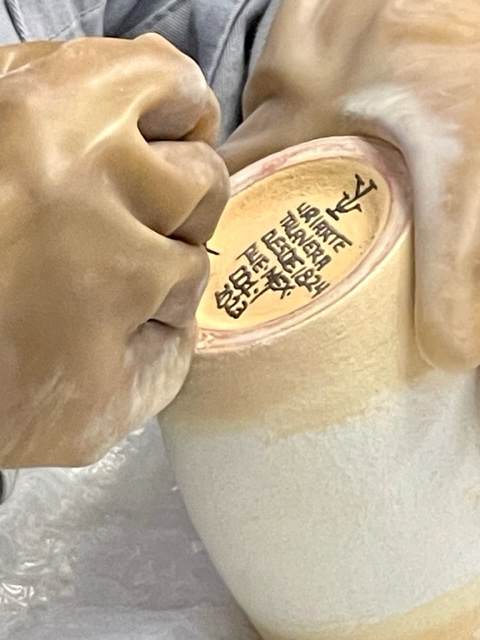
Uriarte Talavera is highly sought-after both within Mexico and internationally. David and I had a tough time deciding in what piece to buy with one more beautiful than the next. At the end we decided on a serving platter, making its debut on Thanksgiving.
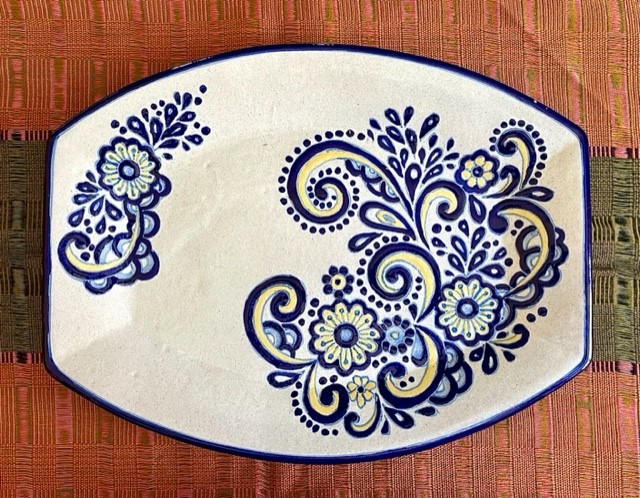
A fabulous lunch at the Museo Casa del Mendrugo restaurant was prepared for our group, and the delicious Chicken Mole selection was presented in two ways: Black Mole and a Green Mole. For some in our group, it was their first taste ever of this local delicacy.
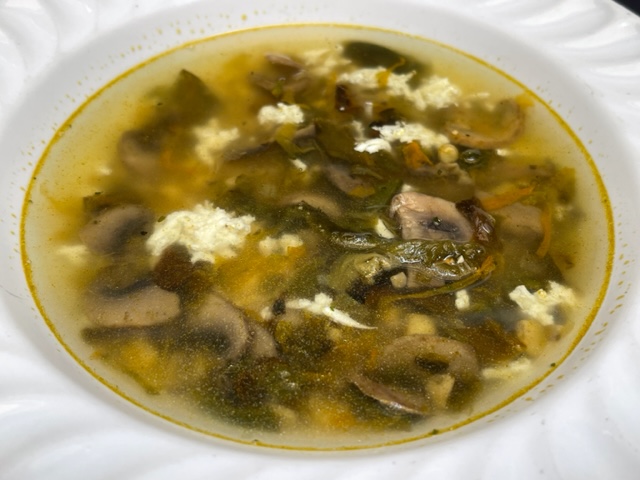

Let’s talk Mole Poblano. Although Puebla is known for many things, to me it’s all about its heavenly tasting, culinary masterpiece, mole. Poblanos (as the city folk are called) take great pride of its cultural specialty; a flavorful, savory sauce that comes in various forms.
Mole preparation is an art form involving toasting and grinding various ingredients (20 +), then simmering them for an extended period to allow the flavors to meld and develop complexity. This results in: Mole Poblano, Mole Negro, Mole Coloradito, Mole Amarillo, etc.
Although many areas in México claim mole as their own, in Puebla, it’s called “Mole Poblano.” This local variation is a complex and rich sauce that often includes ingredients such as: chili peppers, chocolate, various spices (cinnamon and cloves), nuts, seeds, and sometimes even a hint of fruit like plantains or raisins.




No two recipes will taste alike, making mole a lifetime adventure in tasting.
The first time I tried mole was decades ago. At that time, I was scraping it off my chicken to the side of the plate; now I’ll scrape all the remaining bits of sauce off your plate!
By now I’ve learned to love and appreciate the intricacies of this rich, traditional sauce. My favorite mole, Black Mole from Oaxaca, and paired with a seared breast of duck and I go to a very, VERY HAPPY PLACE!
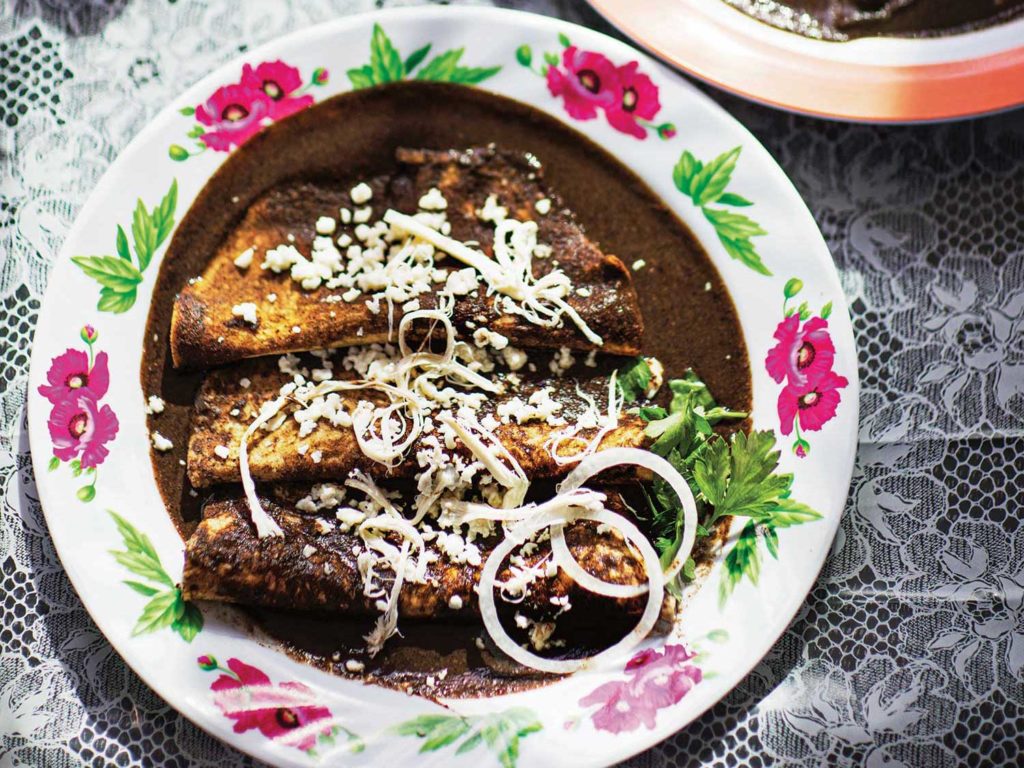
As David takes responsibility for our foodie experiences while traveling, I’m in charge of logistics. His Puebla food discovery is a famous restaurant just a stone’s throw from our beautiful, colonial hotel.
El Mural de los Poblanos, specializes in Puebla (Poblano) cuisine made from locally sourced ingredients from small producers. The restaurant is lined with lively, vibrant murals featuring famous folk that have shaped the history of Puebla.
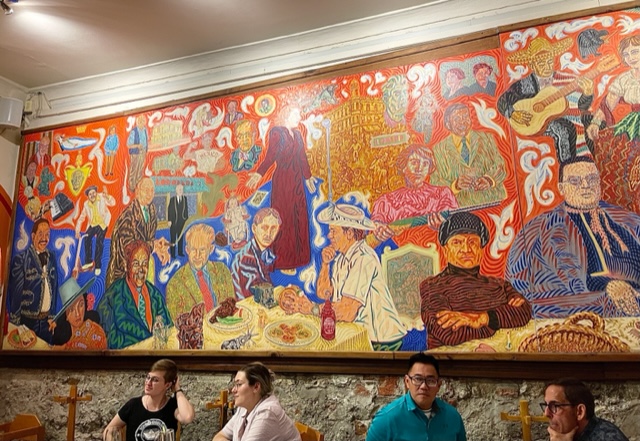
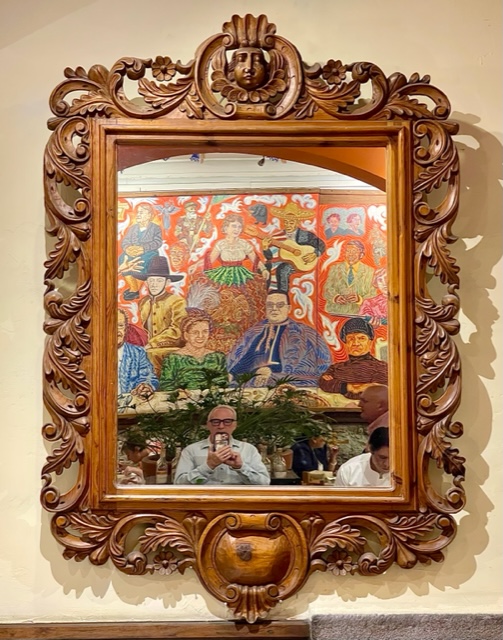
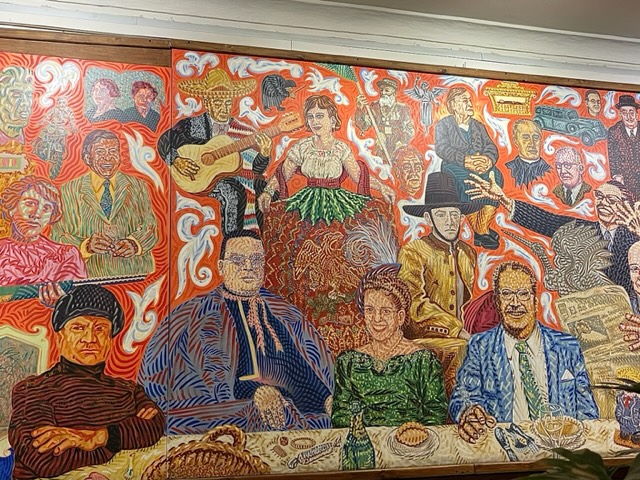
I chose a Duck Confit tasting flight of moles: 5 different moles were served from left to right, mild to spicy:
- Pipián Verde: Green Mole made of toasted pumpkin seeds, tomato, green chilies, herbs and spices; my least favorite sauce – it was a bit grainy.
- Pipián Rojo: Red Mole prepared with peanuts, tomato, dried chilies and spices – please bring me some tortillas to sop it up ~ it was so good!
- Adobo: The traditional recipe of dried chilies and spices that provided unique texture and flavor; in Japan we’d call it Umami.
- Mole Poblano: The signature dish, made with dried chilies, chocolate, seeds, and spices: Please, Sir, can I have s’more?!
- Stained Tablecloths (funny name): Mole made from ancho and guajillo chilies, apple, pineapple, plantain, seeds, and spices – sort of hot ‘n sour.
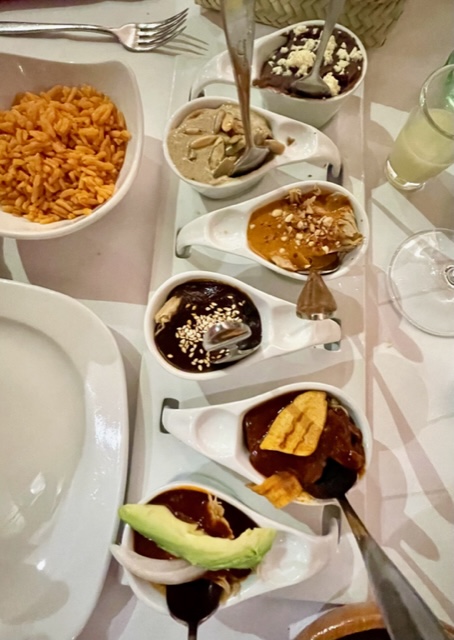
Traditionally, mole was originally served over turkey, but now chicken and duck are common options on menus. For me ~ you can serve it over a chocolate chip cookie!
As I settled in for the night, all snug in my bed, visions of Chilies danced in my head.
Tomorrow: From the mountains to the sea ~ Puebla to Veracruz on the Gulf of México.
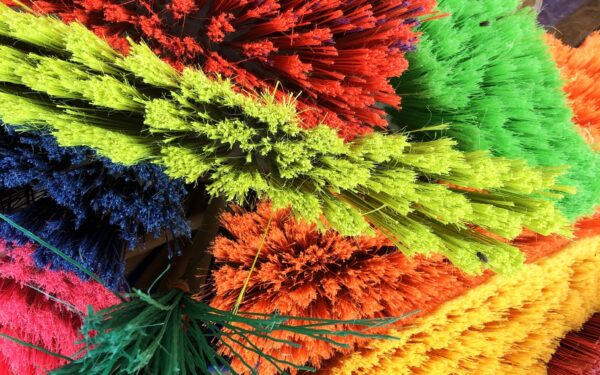

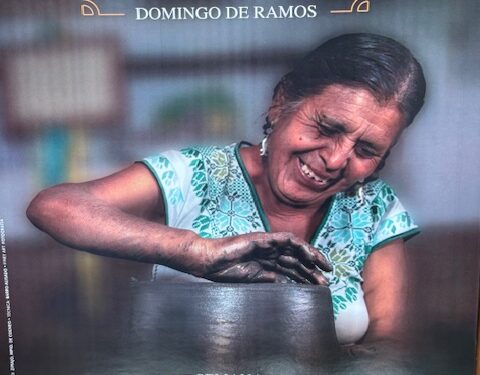

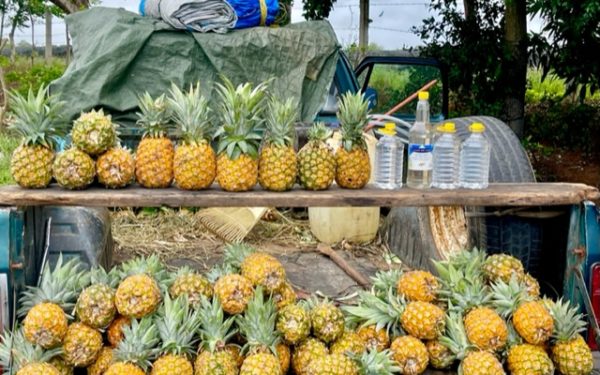
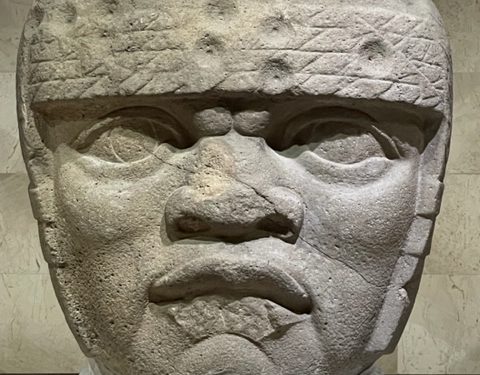
Hi Sergio and David;
Wanted to wish you two a very Happy and Blessed Thanksgiving. That serving tray should really make a big hit! It is beautiful as is all your pictures and comments. Thankyou both so much for sharing!
Beautiful Tour from start to finish, what a beautiful experience. Rosary Chapel and the tile factory were my favorites. I LOVE your new serving platter! I felt I was there with you, except for the Mole Feast. I need Mole, mole, mole!!!! Thank you so much for the adventure.
Looks like this trip rivaled your Japan excursion! You make the most of your adventures. Glad to have you home again!!!
fabulous as always!!! i want to be you two when i grow up!